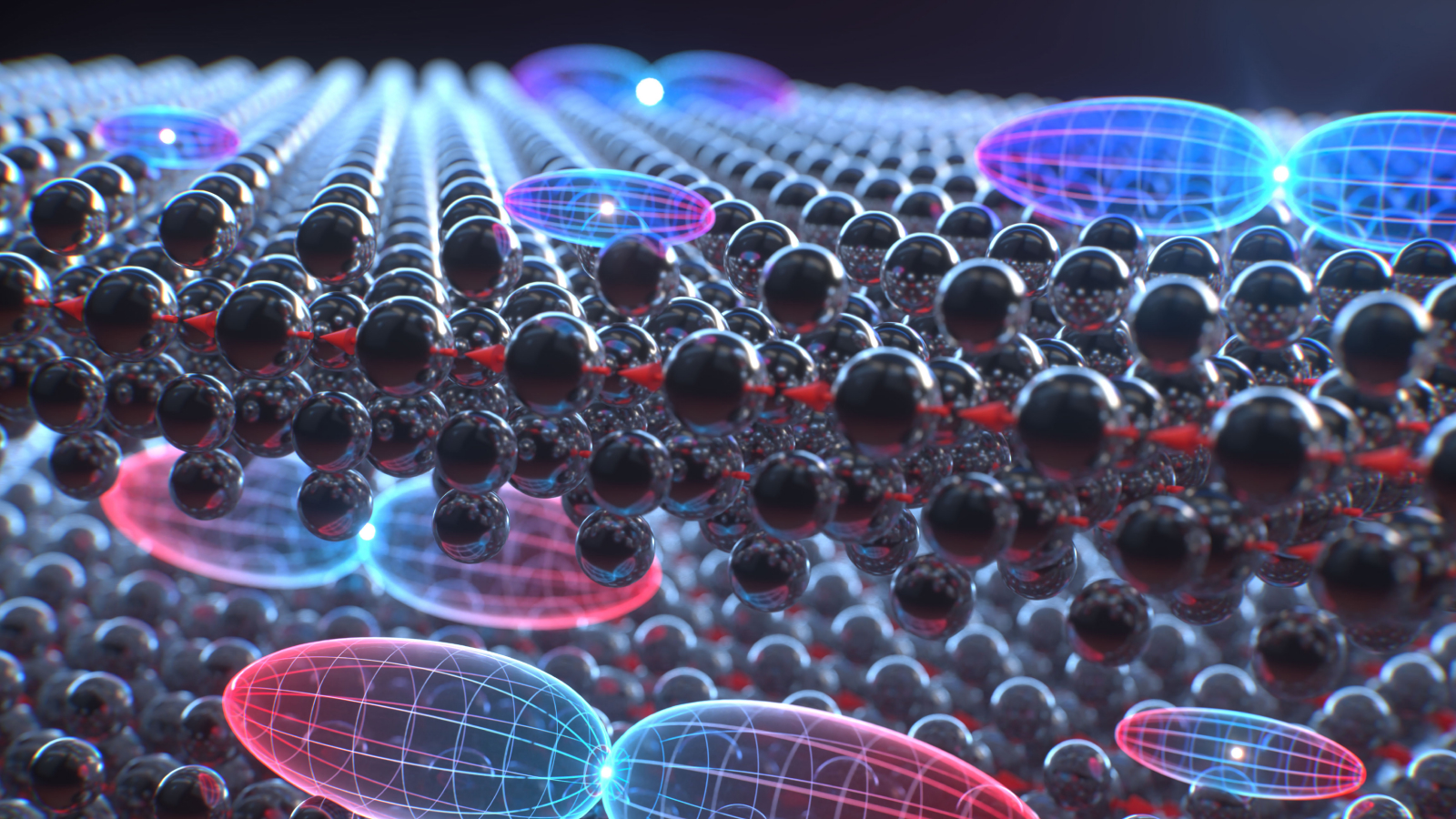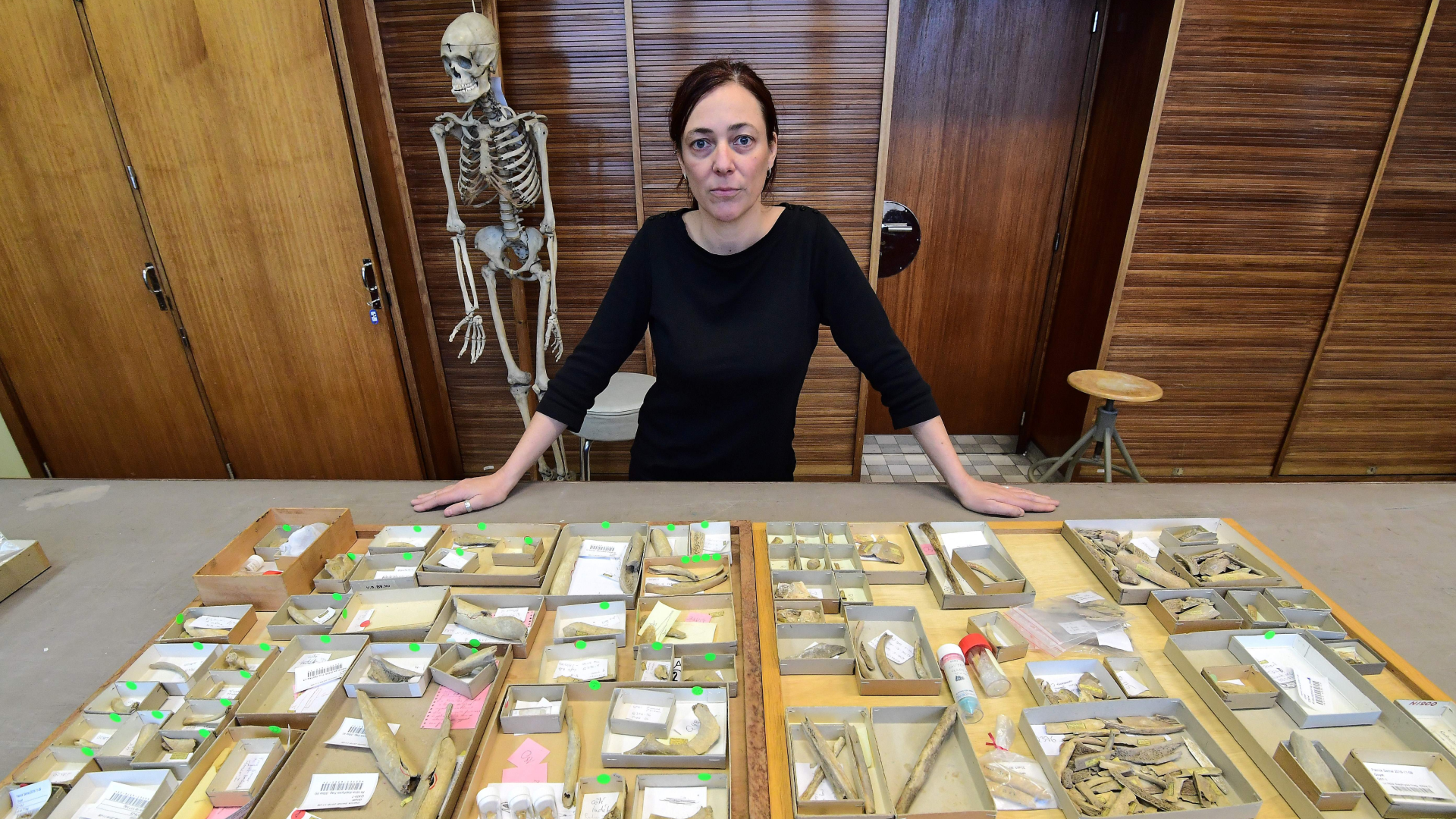Quantum 'miracle material' can store information in a single dimension thanks to newly discovered magnetic switching
Scientists have developed a method for storing quantum information in a single dimension, thereby reducing decoherence, using chromium sulfide bromide.

Scientists have discovered how to use a quantum material to tap into the power of magnetism to store quantum information — thanks to its capacity to support magnetic switching (when the magnetic polarization switches direction). They say it can lead to more viable quantum computing and sensing, thanks to much longer-lasting quantum states.
Chromium sulfide bromide is an unusual material that has been likened to filo pastry (thin, folded layers of pastry) thanks to its structure of just a few layers of atoms. Scientists consider it extremely promising for quantum devices because many of its properties can be used for any type of information storage. It can be used to store information using an electric charge, as photons (as light), through magnetism (through the electronic spin) and even via phonons — like vibrations from sound.One of the many ways in which chromium sulfide bromide could be used to store information is through excitons — quasi-particles that form when an electron and its hole become bound together. When a photon is moved from its grounded energy state, it effectively leaves behind a hole where it once was. Although they are separated, the photon and the hole remain paired together and become known as an exciton.
Previous research has highlighted how these excitons can sometimes form in a straight line in the material. But these excitons also exhibit unusual magnetic properties.
At temperatures less than 132 Kelvin (-222 degrees F or -141 degrees C), the material's layers are magnetized and the electrons are aligned,while the direction of the magnetic field switches for each layer in the material.
When chromium sulfide bromide is warmed to more than 132 K, the material loses its magnetization as the electrons can move in random directions. In this unmagnetized state, the excitons are no longer trapped and extend over multiple layers of the material.
However, when chromium sulfide bromide is only a single atom thick, the excitons are confined to a single dimension. When used in a quantum device, this restriction could allow quantum information in the excitons to be stored much longer than it would otherwise be, as the excitons are less likely to collide with each other and lose the information they carry through decoherence (the loss of quantum information due to interference).
Quantum information in one dimension
In the new study published Feb. 19 in the journal Nature Materials, scientists reported that they had produced excitons in chromium sulfide bromide by firing pulses of infrared light in 20 bursts lasting only 20 quadrillionths of a second (20 x 10-15). They then used a second infrared laser to nudge the excitons into a higher energy state, before finding they had created two different variations of exciton when they should otherwise have had identical states of energy.
Get the world’s most fascinating discoveries delivered straight to your inbox.
When the less energetic pulses were shot by lasers from different axes, the researchers discovered that the direction-dependent excitons could be confined to a single line or expanded into three dimensions. The change from unidimensional; to three-dimensional excitons accounted for how long the excitons could last without colliding with each other.
"The magnetic order is a new tuning knob for shaping excitons and their interactions. This could be a game changer for future electronics and information technology," said co-author of the study Rupert Huber, professor of experimental and applied physics at the University of Regensburg, Germany.
One of the key areas the research team wants to pursue next is to investigate whether these excitons could be converted to magnetic excitations in the electronic spin of the material. Were they to achieve this, it could provide a useful method for converting quantum information between different subatomic particles (photons, excitons and electrons).
Switching between magnetized and non-magnetized states could provide a fast method for converting photon and spin-based quantum information. The hope with chromium sulfide bromide is to harness all of its properties for use in future devices.
"The long-term vision is, you could potentially build quantum machines or devices that use these three or even all four of these properties: photons to transfer information, electrons to process information through their interactions, magnetism to store information, and phonons to modulate and transduce information to new frequencies," said co-author of the study Mackillo Kra, professor of electrical and computer engineering at the University of Michigan, in a statement.
Peter is a degree-qualified engineer and experienced freelance journalist, specializing in science, technology and culture. He writes for a variety of publications, including the BBC, Computer Weekly, IT Pro, the Guardian and the Independent. He has worked as a technology journalist for over ten years. Peter has a degree in computer-aided engineering from Sheffield Hallam University. He has worked in both the engineering and architecture sectors, with various companies, including Rolls-Royce and Arup.
You must confirm your public display name before commenting
Please logout and then login again, you will then be prompted to enter your display name.

